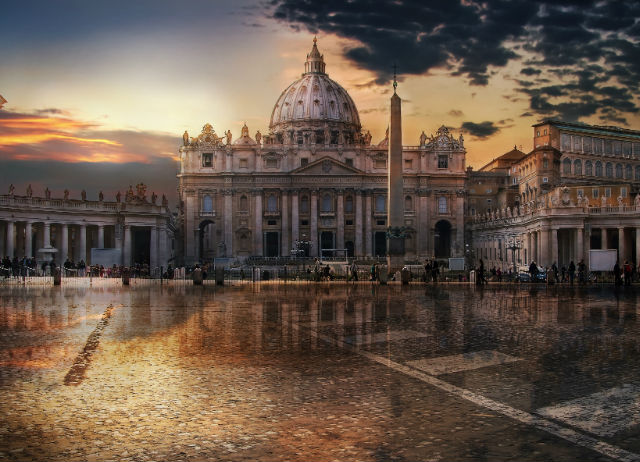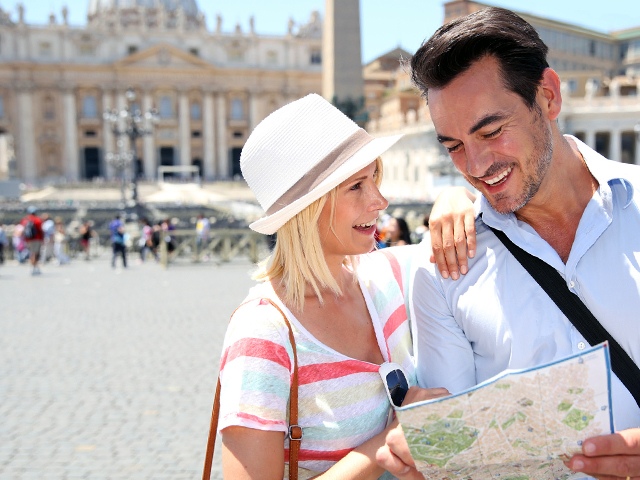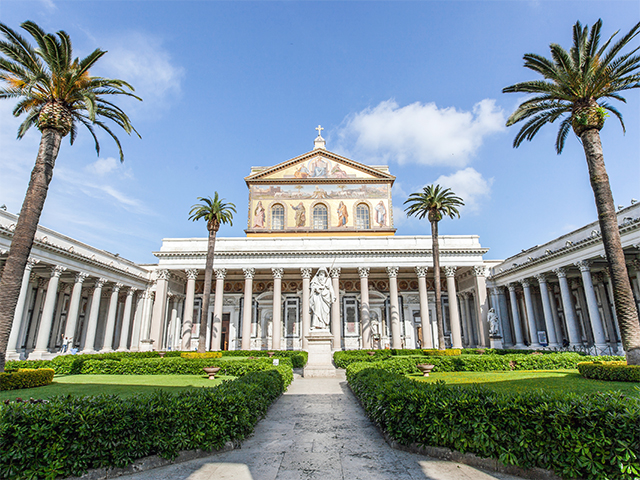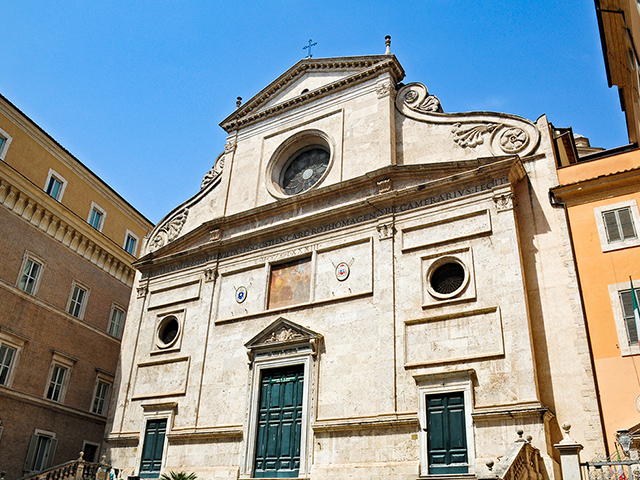Basilica di Santa Maria Maggiore
Discovering the Papal Basilica of Santa Maria Maggiore: history, legend, description and opening times of one of the most beautiful churches of RomeThe Basilica di Santa Maria Maggiore is one of the four Papal basilicas of Rome, together with Saint Peter, Saint John in the Lateran and Saint Paul Outside the Walls.
Enclosed between Piazza dell'Esquilino and Piazza di Santa Maria Maggiore, this imposing basilica is easily reachable on foot both from Termini Station and the Colosseum.
An absolute Early Christian masterpiece of art and architecture. You will be taken aback by the beauty of its mosaics, frescoes and sculptures!
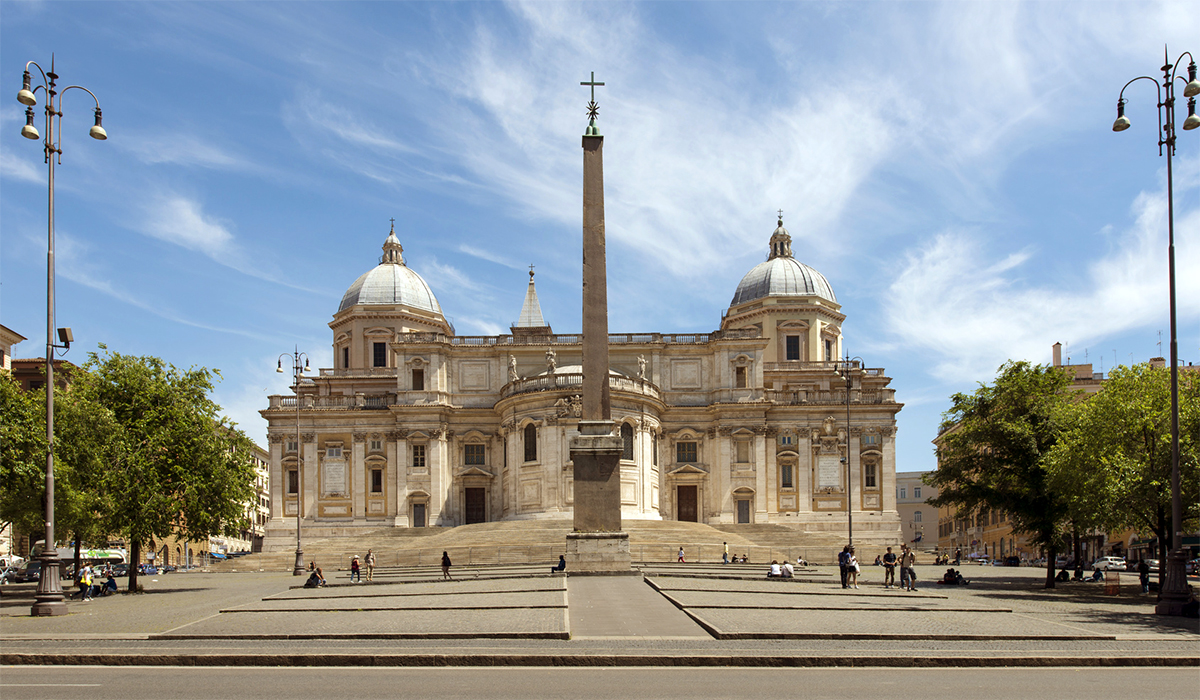
Basilica di Santa Maria Maggiore seen from Piazza dell'Esquilino
BASILICA DI SANTA MARIA MAGGIORE BETWEEN HISTORY AND LEGEND
The Basilica di Santa Maria Maggiore, located in the square with the same name, on the top of the Esquiline Hill, is also known as "Liberiana" due to a legend linked to Pope Liberius. In fact, it is said that on the night of the 5th of August 352 A.D., Saint Mary appeared in dreams to the Pope and asked him to build a church where he would find snow.
When the next morning, in the midst of a scorching Roman summer day, the Pope found snow on the Esquiline Hill, he commanded to build the church called indeed "Saint Mary of the Snows". The commemoration of the "miracle of the snow" takes place on the 5th of August every year on a suggestive and moving celebration, where the faithful are covered by a cascade of white petals falling down from the ceiling of the Pauline Chapel.
The basilica was actually built in the fifth century under the papacy of Sixtus III and it was later modified by late 13th century by Pope Nicholas IV who added the transept. Between the 16th and 17th centuries Pope Sixtus V and Pope Paul V built the two chapels in their own honour (Sistine and Paoline). Between 1741 and 1743 Ferdinando Fuga built the new façade with the great Barroque portico formed by five openings and three more in the superior loggia.
It must be said that the reconstruction masked the splendid mosaics of the 13th century façade by Filippo Rusuti, which represented exactly the creation of the Basilica with Mary Most Holy, who appeared to Pope Liberium in a dream, but at the same time it has remained intact. The mosaics, nestled like in a frame by the new façade, can only be seen with a guided visit.
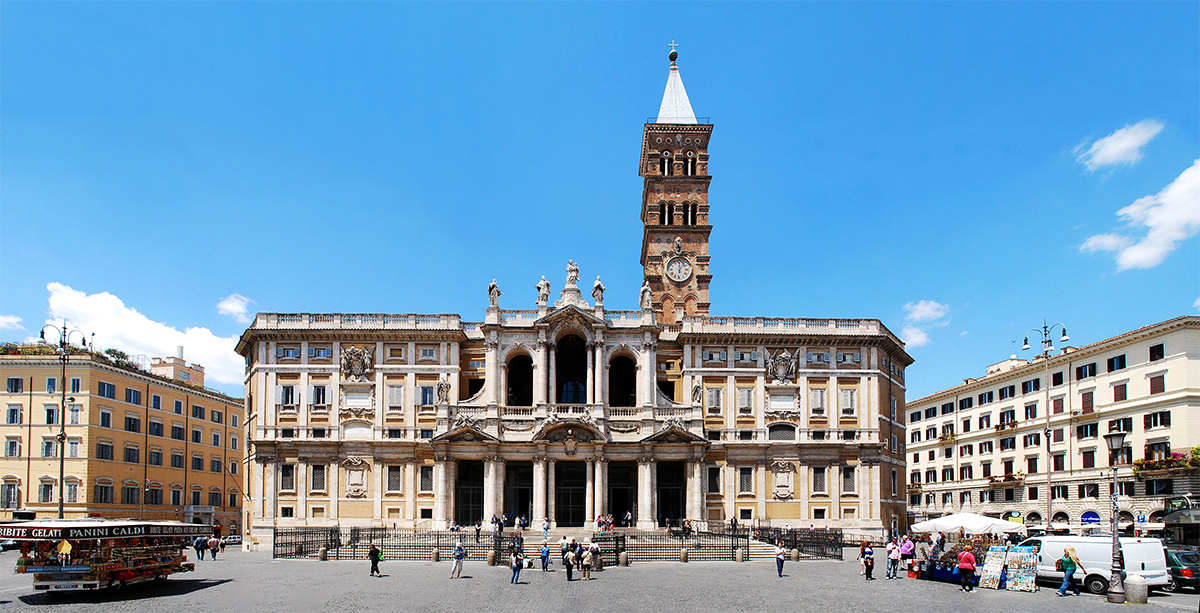
Basilica di Santa Maria Maggiore seen from the square with the same name
WHAT TO SEE INSIDE THE BASILICA DI SANTA MARIA MAGGIORE
Entering in the Basilica di Santa Maria Maggiore you will not help but admire the splendid mosaics of the central nave and those on the Triumphal Arch dating back to the 5th century, or those on the Apse made by Torriti by commission of Pope Nicholas IV.
The floor in Cosmati style was a present by knight Scoto Paparone and his son, dating back to 1288. The coffered ceiling gilded with gold is owed to Giuliano da Sangallo.
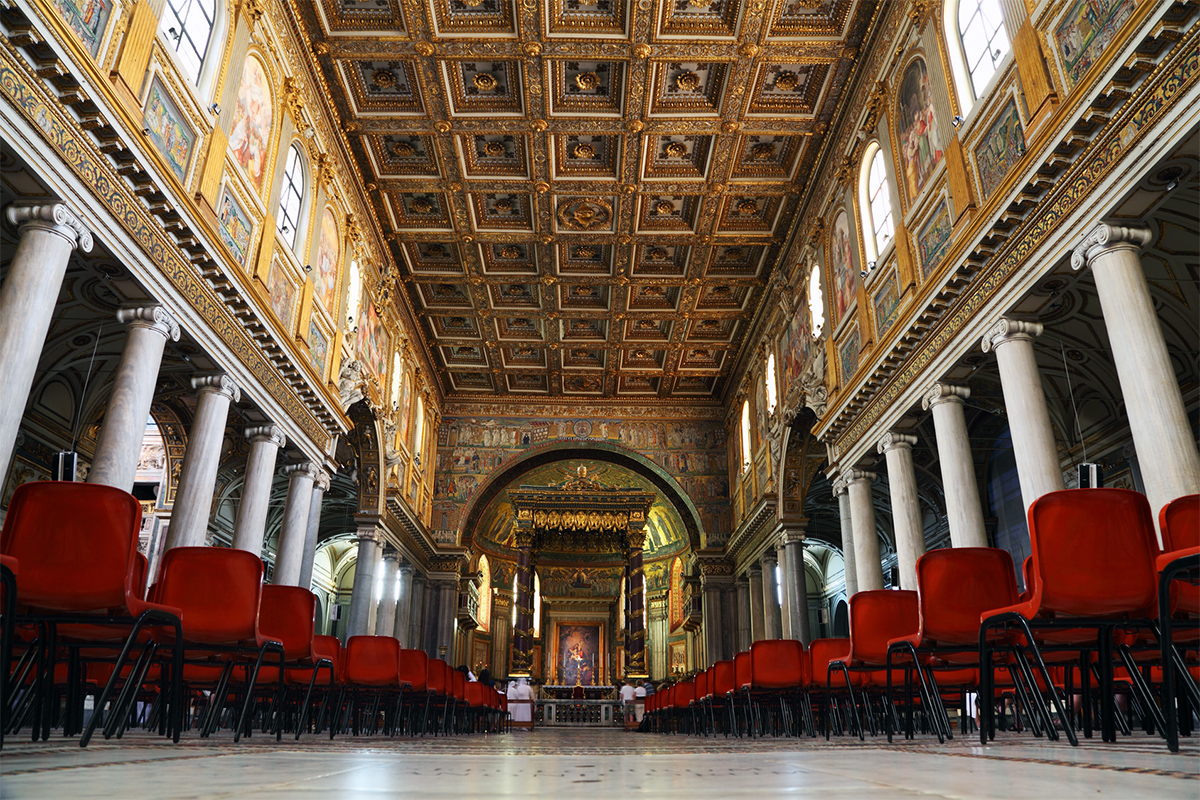
Nave of the Basilica di Santa Maria Maggiore
Continue visiting the different chapels: Borghese Chapel, Sistine Chapel (not to be confused with Michelangelo's Sistine Chapel in the Vatican Museums), Sforza Chapel, Cesi Chapel, Chapel of the rucifix and the remains of Saint Michael Chapel.
Beyond doubt, are also very impressive the Main Altar, on the right of which is the tomb of great architect Gian Lorenzo Bernini, the Relics of the Sacra Culla (Holy Crib, the manger where Mary laid baby Jesus), the 13th-century Nativity scene and the Baptistery.
The mosaics in the panels underneath the windows are wonderful and represent a series of stories from the Old Testament: stories of Abraham, Jacob e Isaac on the left side, Moses and Joshua on the right side.
Under the papacy of John Paul II, the 8th of December 2001 was opened a museum, where many other ancient priceless masterpieces are kept.
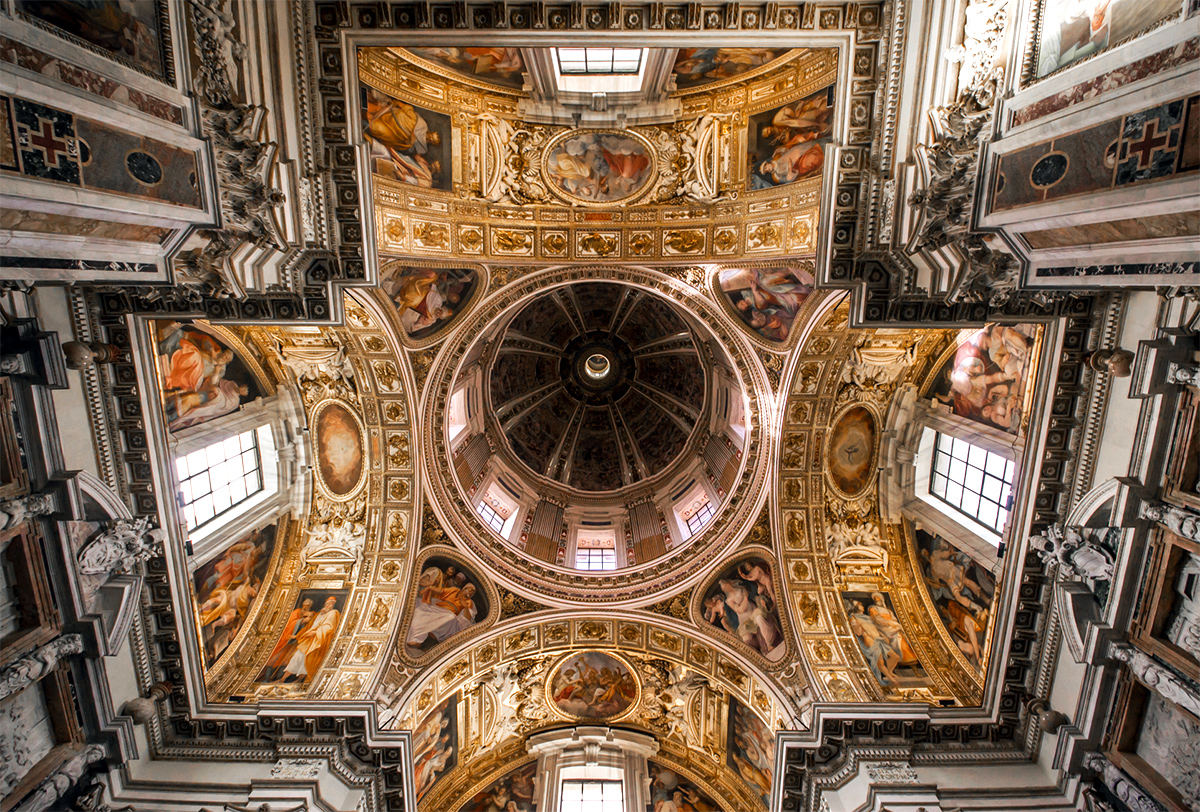
Chapel of Sixtus V in the Basilica di Santa Maria Maggiore
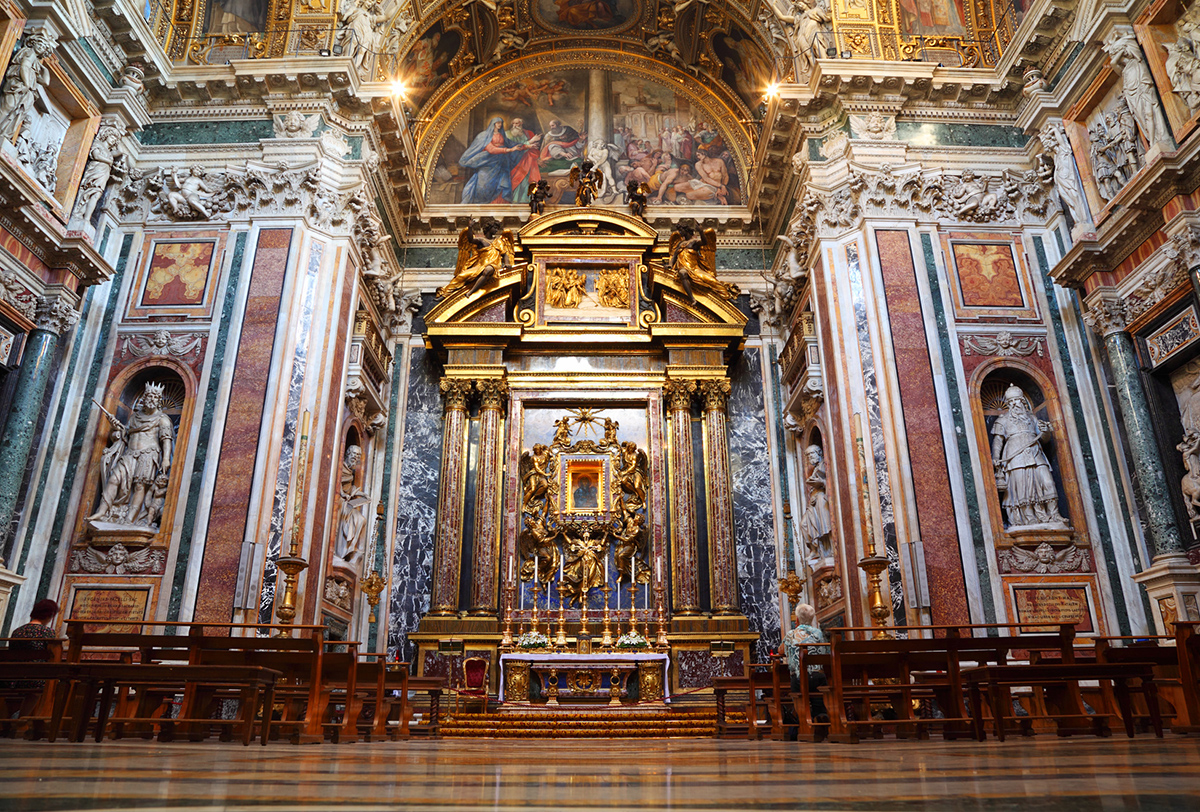
Basilica di Santa Maria Maggiore - Main Altar
What else can we add? For sure one article is not enough to describe all the wonders contained in the interior of the Basilica di Santa Maria Maggiore. Since we think we have provided you with the right amount of curiosity, we leave the rest for you to discover in person.
In the box at the bottom of the page you can check opening times, address and all useful information to organize you visit at best.
A last tip: visit the basilica at sunset or when night falls! In fact, the new evening lightning, makes it look even more beautiful and suggestive.
Useful information
Basilica di Santa Maria Maggiore
- HOW TO GET THERE
- From the Port of Civitavecchia: Get to Civitavecchia Train Station and get on the first regional train bound for Rome. After about 1 hour and 10 minutes get off at Roma Termini Station. The entrance to the Basilica is from Piazza di Santa Maria Maggiore, where you can get ich is a short walk away from the station. You can also get there thanks to metro lines B or B1 getting off at stop Cavour.
- TIMETABLES
- The Basilica is open every day from 7 am to 6.45 pm.Mass Times:Working days: 7.00 - 8.00 - 9.00 (in the Sforza Chapel) 10.00 - 11.00 - 12.00 - 18.00.Holidays: 7.00 - 8.00 - 9.00 (in the Paoline Chapel) 10.00 (in Latin) - 12.00 - 18.00 (in the Papal Altar)*The church can be visited during services
- PRICES
Free admission



 PORT MOBILITY CIVITAVECCHIA
PORT MOBILITY CIVITAVECCHIA








